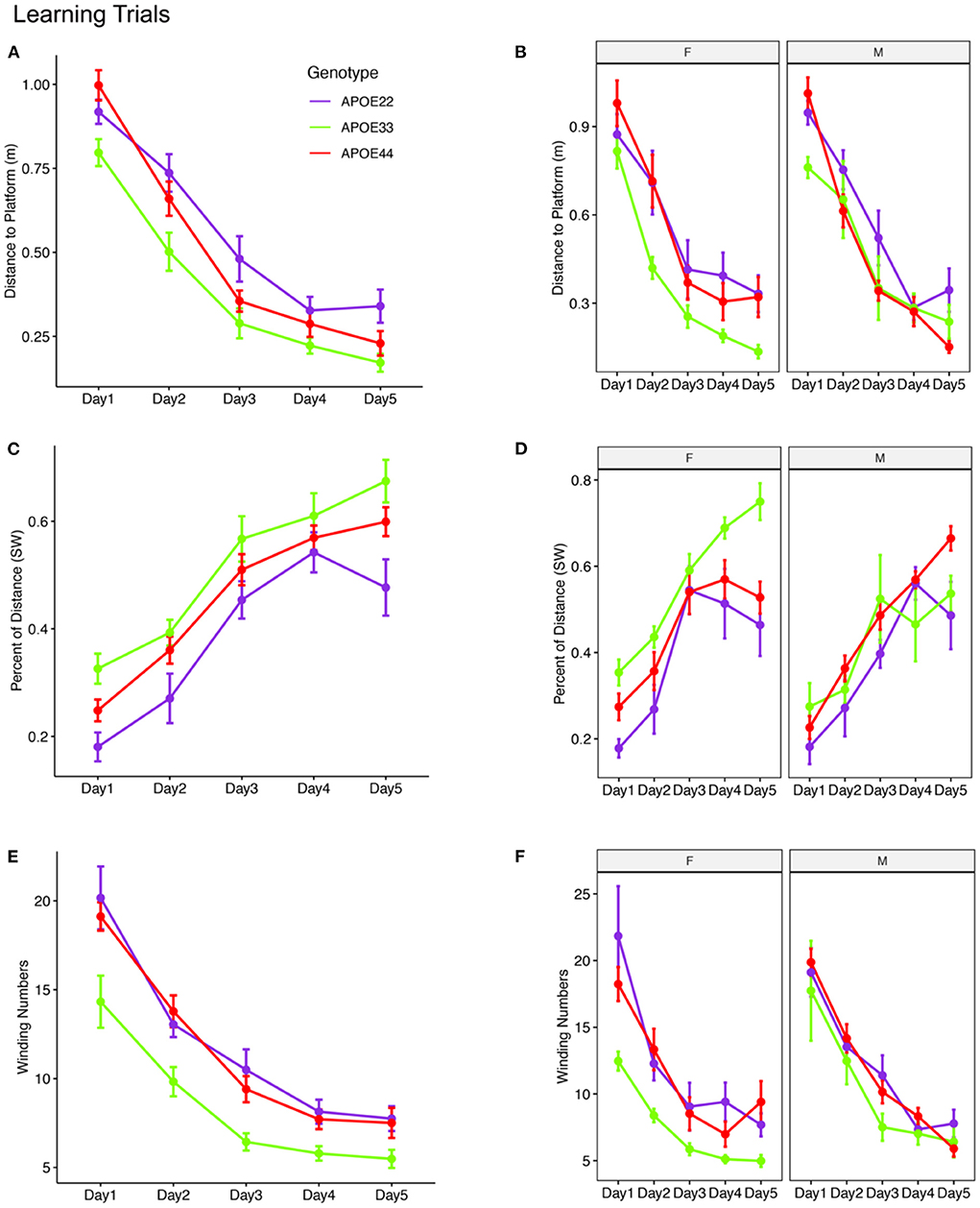Absolute Winding Number Differentiates Mouse Spatial Navigation Strategies With Genetic Risk for Alzheimer’s Disease
- 1Department of Radiology, Duke University, Durham, NC, United States
- 2Department of Neurology, Duke University, Durham, NC, United States
- 3Brain Imaging and Analysis Center, Duke University, Durham, NC, United States
- 4Biomedical Engineering, Duke University, Durham, NC, United States
- 5Department of Computer Science, Princeton University, Princeton, NJ, United States
- 6Department of Biostatistics, University of California, Los Angeles, Los Angeles, CA, United States
- 7Department of Psychology and Neuroscience, Duke University, Durham, NC, United States
- 8Department of Pathology and Laboratory Medicine, The University of North Carolina, Chapel Hill, Chapel Hill, NC, United States
- 9Department of Statistical Science, Duke University, Durham, NC, United States
A corrigendum on
Absolute winding number differentiates mouse spatial navigation strategies with genetic risk for Alzheimer's disease
by Badea, A., Li, D., Niculescu, A. R., Anderson, R. J., Stout, J. A., Williams, C. L., Colton, C. A., Maeda, N., and Dunson, D. B. (2022). Front. Neurosci. 16:848654. doi: 10.3389/fnins.2022.848654
In the published article there was an error in the figures. Figure 2 was omitted, and Figure 3 was mistakenly used instead of Figure 2. The corrected Figure 2 appears below.

Figure 2. Learning trials. Mice swam shorter distances over the 5 testing days until reaching the hidden platform, indicating that they were learning (A,B). Meanwhile, the percentage time swam in the target quadrant increased with time (C,D). The absolute winding number clearly discriminated the APOE3 mice relative to APOE2 and APOE4 carriers, which used more similarly shaped trajectories (E,F). The effects were larger in females across the 5 days. F, female; M, male. Graphs show mean ± standard error.
The authors apologize for this error and state that this does not change the scientific conclusions of the article in any way. The original article has been updated.
Publisher's note
All claims expressed in this article are solely those of the authors and do not necessarily represent those of their affiliated organizations, or those of the publisher, the editors and the reviewers. Any product that may be evaluated in this article, or claim that may be made by its manufacturer, is not guaranteed or endorsed by the publisher.
Keywords: APOE, Alzheimer's disease, brain, mouse, connectivity, memory, MRI
Citation: Badea A, Li D, Niculescu AR, Anderson RJ, Stout JA, Williams CL, Colton CA, Maeda N and Dunson DB (2022) Corrigendum: Absolute winding number differentiates mouse spatial navigation strategies with genetic risk for Alzheimer's disease. Front. Neurosci. 16:1070425. doi: 10.3389/fnins.2022.1070425
Received: 14 October 2022; Accepted: 09 November 2022;
Published: 22 November 2022.
Edited and reviewed by: Alexandra Petiet, INSERM U1127 Institut du Cerveau et de la Moelle épinière (ICM), France
Copyright © 2022 Badea, Li, Niculescu, Anderson, Stout, Williams, Colton, Maeda and Dunson. This is an open-access article distributed under the terms of the Creative Commons Attribution License (CC BY). The use, distribution or reproduction in other forums is permitted, provided the original author(s) and the copyright owner(s) are credited and that the original publication in this journal is cited, in accordance with accepted academic practice. No use, distribution or reproduction is permitted which does not comply with these terms.
*Correspondence: Alexandra Badea, alexandra.badea@duke.edu
†These authors have contributed equally to this work and share first authorship
 Alexandra Badea
Alexandra Badea Didong Li5,6†
Didong Li5,6† Andrei R. Niculescu
Andrei R. Niculescu Robert J. Anderson
Robert J. Anderson Jacques A. Stout
Jacques A. Stout Christina L. Williams
Christina L. Williams Carol A. Colton
Carol A. Colton